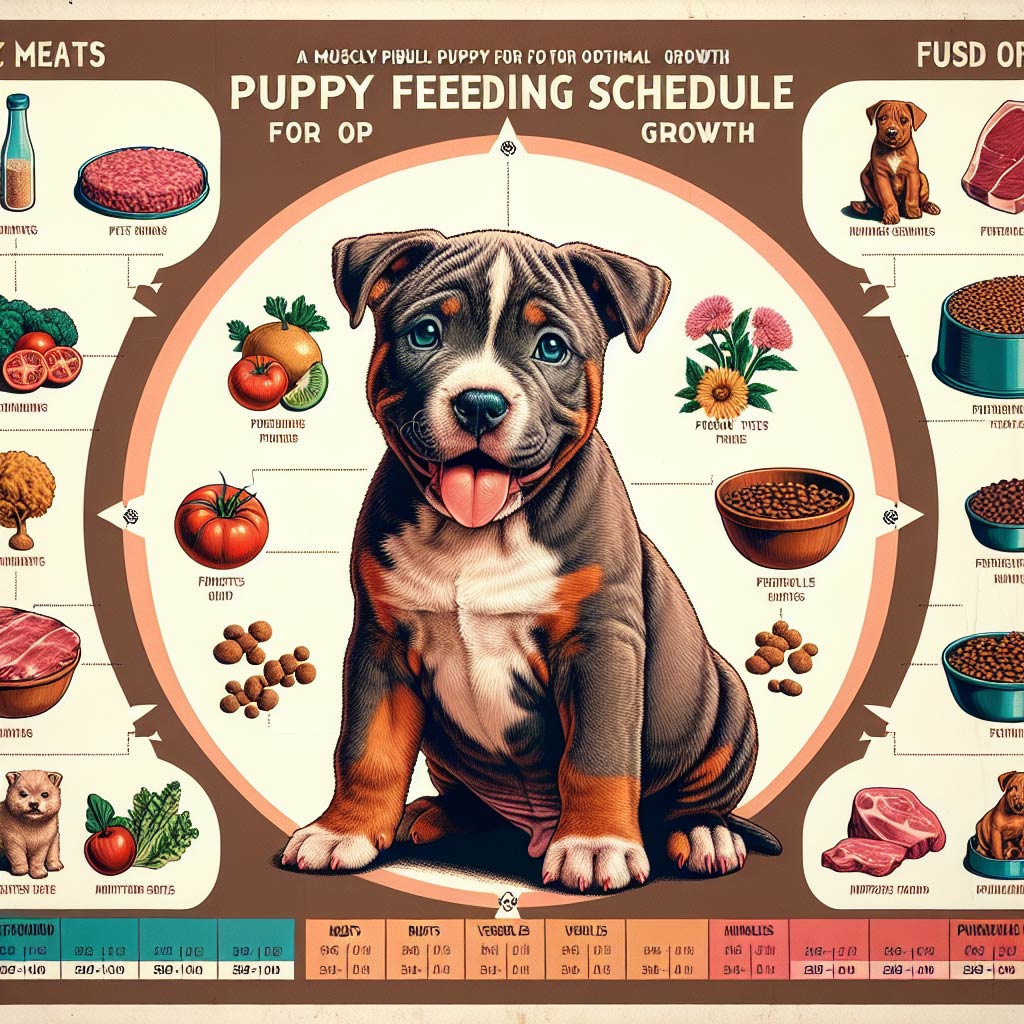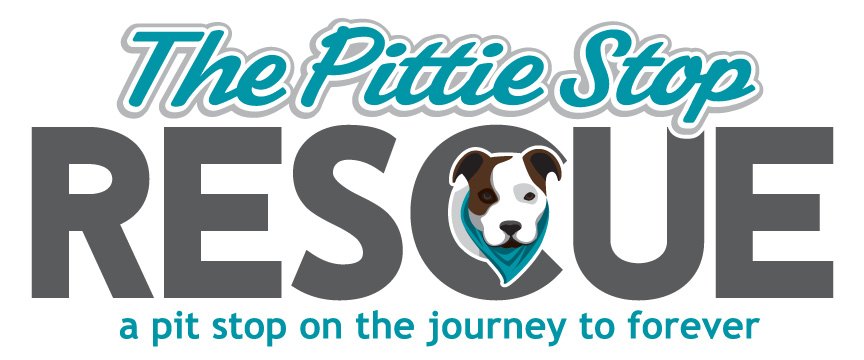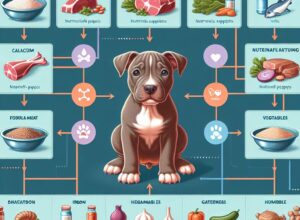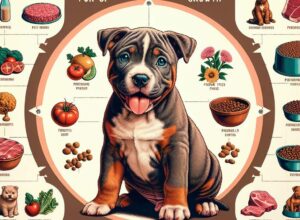
Fueling Your Pitbull Puppy’s Growth
When it comes to raising a healthy and strong pitbull puppy, nothing is more crucial than their diet. It’s the foundation that supports their rapid growth, fuels their playful energy, and builds the muscle mass that pitbulls are so well-known for. But with the overwhelming amount of information out there, it can be tough to know exactly what to feed your furry friend. Let’s simplify it and ensure your pitbull puppy gets the best start in life.
Key Takeaways: Optimal Nutrition for Strong Muscles
- High-quality protein is essential for building strong muscles in pitbull puppies.
- Fats provide energy and are necessary for healthy development, but they must be balanced with other nutrients.
- Carbohydrates are important for sustained energy, but should come from nutritious sources.
- A consistent feeding schedule and proper portion control are key to promoting healthy growth.
- Choosing the right food involves looking for whole food ingredients and avoiding fillers and additives.
Understanding Puppy Nutritional Needs
Just like a building needs a strong foundation, a pitbull puppy needs the right balance of nutrients to grow up healthy and strong. Puppies have different nutritional needs than adult dogs. They require more calories, protein, and certain vitamins and minerals to support their rapid growth and development. It’s not just about feeding them more; it’s about feeding them right.
Importance of Protein for Muscle Development
Protein is the building block of muscle, and for a breed like the pitbull, known for its strength and athleticism, it’s non-negotiable in their diet. A pitbull puppy’s diet should be composed of 22% to 32% high-quality protein from sources like chicken, beef, fish, or eggs. This will support their muscle development and ensure they grow to their full potential.
Balancing Fats and Carbohydrates for Energy
Fats are a dense source of energy that are vital for your pitbull puppy’s growth. They help in the absorption of vitamins and provide the essential fatty acids needed for a healthy coat and skin. However, the key is balance. Too much fat can lead to unhealthy weight gain. Carbohydrates, on the other hand, should come from whole grains, vegetables, and fruits to provide sustained energy and aid in digestion.
Structuring Your Puppy’s Diet
Creating a diet for your pitbull puppy isn’t just about choosing the right food; it’s also about how and when you feed them. A structured diet and feeding schedule help regulate their metabolism and provide a routine that can prevent overeating. It’s important to feed your puppy three to four times a day and to adjust the amount as they grow and their activity levels change.
The Role of Feeding Schedules in Muscle Growth
Consistency is key when feeding your pitbull puppy. A regular feeding schedule not only helps with house training but also impacts muscle growth. Feeding your puppy at the same times every day regulates their body’s hunger signals and ensures they have the energy they need for growth and play. Moreover, spaced-out meals support better digestion and nutrient absorption, which is essential for building healthy muscle.
Quantifying Portions: How Much to Feed for Ideal Growth
Portion control is just as important as the quality of the food you’re giving your pitbull puppy. Overfeeding can lead to obesity, while underfeeding can stunt their growth. The right amount depends on your puppy’s age, weight, and activity level. A general rule is to start with the feeding guidelines on the puppy food package and adjust from there. Monitor your puppy’s body condition and consult with your vet to fine-tune portion sizes for optimal growth.
Selecting the Right Food
Choosing the best food for your pitbull puppy can feel like navigating a maze with all the options available. The right food will support their development and set them up for a healthy life. Look for puppy-specific formulas with whole food ingredients, designed to meet the high energy and nutrient demands of growing pups. Avoid generic foods that are not age-specific, as they may not provide the necessary nutrients for your growing puppy.
Deciphering Ingredient Lists: What to Look For
- Whole proteins like chicken, beef, or fish should be listed as the first ingredient.
- Whole grains, vegetables, and fruits for carbohydrates, not fillers like corn or wheat gluten.
- A balance of omega-3 and omega-6 fatty acids for skin and coat health.
- Natural preservatives instead of chemical ones like BHA or BHT.
- Fortified with essential vitamins and minerals for complete nutrition.
Homemade vs. Commercial Diets: Pros and Cons
Homemade diets allow you to control exactly what goes into your puppy’s food, which is great if your dog has specific dietary needs or allergies. However, crafting a balanced homemade diet requires a lot of research and consultation with a veterinary nutritionist. Commercial diets, on the other hand, are convenient and scientifically formulated to meet your puppy’s needs, but it’s important to choose high-quality brands that prioritize natural, wholesome ingredients.
Supplements: Are They Necessary?
While a well-balanced puppy food should provide all the necessary nutrients, there are situations where supplements can be beneficial. For example, if your vet identifies a specific deficiency or if your puppy has a health condition that requires additional support. Always consult with your vet before adding supplements to your puppy’s diet to avoid causing imbalances that can do more harm than good.
Feeding Practices That Support Growth
Proper feeding practices are as vital as the food itself when it comes to your pitbull puppy’s growth. These practices ensure that your puppy not only gets the right nutrients but also absorbs them effectively to support healthy development. A consistent routine helps your puppy feel secure and establishes good eating habits that can prevent issues like picky eating or food aggression.
Meal Timing and Frequency for Young Puppies
Young puppies have tiny tummies and high energy needs, so they require frequent, small meals throughout the day. For the first few months, feeding your pitbull puppy four times a day is ideal. As they grow, you can gradually reduce meal times to three times a day. Consistent meal timing helps regulate their digestion and provides a steady stream of energy for growth and play.
- 4-6 months old: 4 meals a day
- 6-12 months old: 3 meals a day
- 12 months and older: 2 meals a day
Transitioning from Puppy to Adult Food
As your pitbull puppy approaches adulthood, you’ll need to transition them to adult food. This change should happen gradually over a week or so, mixing increasing amounts of adult food with their puppy food to prevent digestive upset. The switch is typically recommended around the age of 12 to 18 months, depending on their growth and development. Your vet can give you the best advice on when to make the switch for your specific pup.
Monitoring Your Pitbull Puppy’s Progress
Keeping an eye on your pitbull puppy’s development is essential to ensure they’re on the right track. Regular check-ups with your vet, watching their weight, and observing their behavior are all part of this monitoring process. It’s not just about growth; it’s about ensuring that growth is healthy and balanced.
Recognizing Signs of Healthy Development
Healthy development in pitbull puppies is marked by steady weight gain, good energy levels, and a shiny coat. Their eyes should be clear and bright, and their stools firm. They should be eager to play and interact with you and others. If you’re seeing these positive signs, you’re likely on the right track with your puppy’s diet and care.
When to Adjust Your Puppy’s Diet
Adjusting your puppy’s diet may be necessary if you notice signs like a lackluster coat, lethargy, or irregular stools. Other indicators can include either no weight gain or excessive weight gain. If you see any of these signs, it’s time to reassess your feeding practices. Always consult with your vet before making any significant changes to your puppy’s diet to ensure their continued health and growth.
Common Feeding Mistakes to Avoid
When it comes to feeding your pitbull puppy, it’s easy to fall into some common traps. Whether it’s overindulgence or simply not knowing, these mistakes can hinder your puppy’s growth and health. Being aware of these pitfalls is the first step to ensuring your puppy is on the path to a strong and healthy adulthood.
Overfeeding: Finding the Balance
Overfeeding is one of the most common mistakes puppy owners make. It’s understandable; we want to shower our pups with love, often in the form of treats and extra helpings of food. However, too much food leads to excess weight, which can strain your puppy’s developing bones and joints. Stick to the recommended portions and use healthy treats sparingly. Remember, a lean, fit puppy is a healthy puppy.
Dietary No-Nos: Ingredients That Can Harm
- Chocolate and caffeine: Toxic to dogs and can lead to serious health issues.
- Onions and garlic: Can cause anemia by damaging red blood cells.
- Grapes and raisins: Even in small amounts, they can cause kidney failure.
- Xylitol: A sweetener found in many sugar-free products that can cause liver failure.
- Excessive salt: Can lead to sodium ion poisoning, with symptoms like vomiting and diarrhea.
It’s not just about what you feed your pitbull puppy, but also what you should never feed them. Certain human foods can be downright dangerous for dogs. Always keep these toxic foods out of reach and educate your family about these hazards. When in doubt, stick to dog-safe foods and consult your vet before sharing your snacks.
FAQs: Expert Answers to Common Questions
You’ve got questions, and I’ve got answers. Let’s tackle some of the most common queries I hear from pitbull puppy parents. Armed with this knowledge, you’ll be better equipped to make informed decisions about your furry friend’s diet and care.
How often should a pitbull puppy eat?
Frequency is key for a growing pitbull puppy. Up to six months old, they should be eating four meals a day. As they grow and their stomach expands, you can reduce this to three meals a day until they’re about a year old. After that, two meals a day is sufficient. Consistent meal times help regulate their energy and prevent blood sugar spikes and drops.
Can my pitbull puppy have a raw food diet?
Yes, pitbull puppies can eat raw meat, but it’s not a decision to take lightly. Raw diets can provide fresh, whole nutrition, but they must be carefully balanced to avoid nutritional deficiencies or excesses. There’s also a risk of bacterial contamination, which can be a concern for both your puppy and your family. If you’re considering a raw diet, it’s crucial to consult with a vet or a canine nutritionist to ensure it’s done safely and correctly.
Should I be concerned about my puppy’s rapid growth?
Rapid growth in pitbull puppies can be a double-edged sword. While it’s a sign they’re getting plenty of nutrients, it can also put undue stress on their developing bones and joints, especially if the growth is due to excessive calorie intake rather than a balanced diet. Watch for signs like difficulty in movement or discomfort, which could indicate that their body is being pushed too hard by their weight. If you’re concerned about how fast your puppy is growing, a check-up with the vet can give you peace of mind and ensure their growth is on a healthy trajectory.
What is the best protein source for my pitbull puppy?
The best protein sources for your pitbull puppy are those that provide complete amino acids and are easy to digest. Lean meats such as chicken, turkey, and beef are excellent choices. Fish is also a great option as it’s rich in omega-3 fatty acids, which are beneficial for your puppy’s skin and coat health. If you’re feeding a commercial diet, make sure the protein sources are named (like ‘chicken meal’ instead of ‘poultry meal’) to ensure quality. For homemade diets, consult with a nutritionist to ensure your puppy’s protein needs are being met.
How can I tell if my puppy is getting too much protein?
While protein is essential, too much of it can be a problem, especially for puppies whose kidneys are still developing. Signs that your puppy may be getting too much protein include excessive thirst and urination, as their body tries to expel the surplus. Another sign could be a lack of appetite or digestive issues like diarrhea. Always ensure that your puppy’s diet is balanced; protein should be high, but not at the expense of other vital nutrients. If you suspect your puppy’s protein intake is too high, consult with your vet for guidance.
As we wrap up this comprehensive guide to feeding your pitbull puppy for maximum muscle growth, remember that every puppy is unique. While the guidelines provided here will set you on the right path, always be observant and responsive to your puppy’s individual needs. A well-fed puppy is a happy, energetic, and growing puppy, but balance in all things is key.
Good nutrition is the cornerstone of your pitbull puppy’s future health and happiness. By providing them with high-quality protein, balancing their fats and carbohydrates, and adhering to a consistent feeding schedule, you’re giving them the best chance at a robust and vigorous life. Keep an eye on their development, adjust their diet as needed, and always consult with your vet if you have concerns. With the right care and attention, your pitbull puppy will grow into a strong and loyal companion for years to come.



